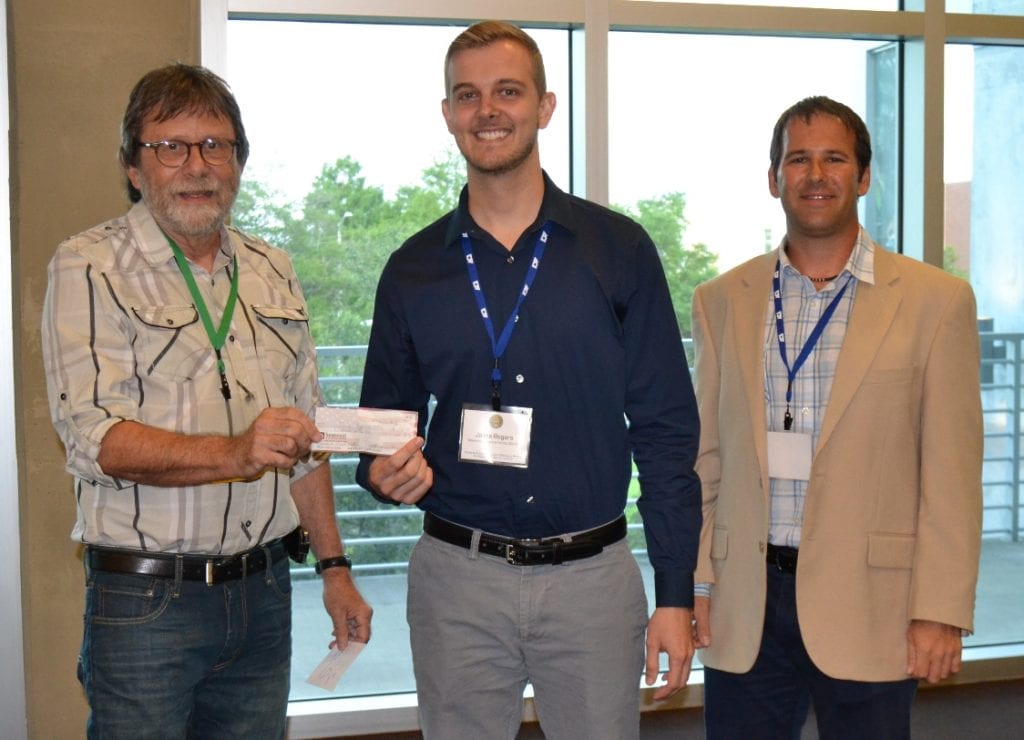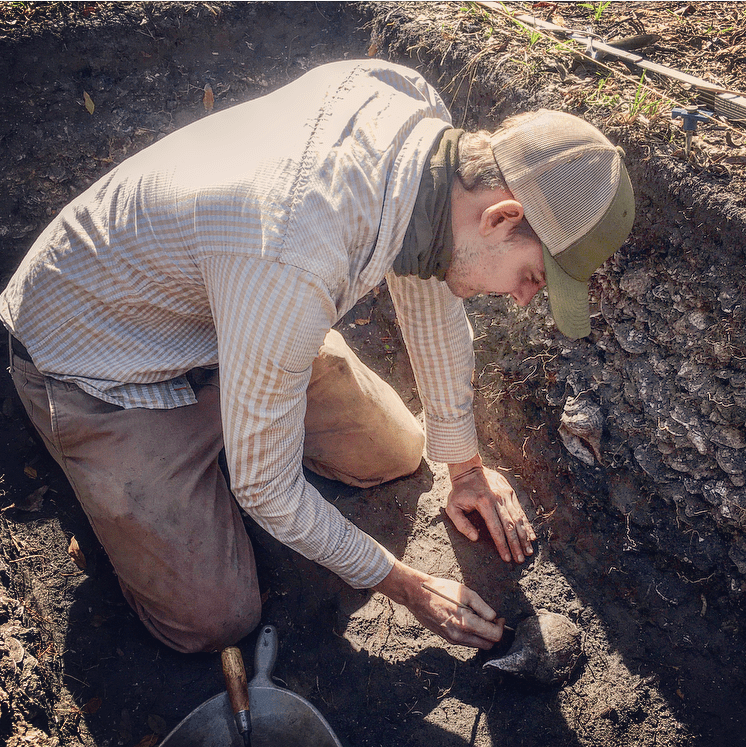Researching the Ever-Changing Tampa Bay

Jaime Rogers, a master’s anthropology student, received $1,700 in grants from the Florida Anthropological Society and the Florida Archaeological Council to fund his research.
“I am grateful that my research was recognized as being interesting enough to fund,” Rogers said. “There are some great research projects going on in Florida archaeology right now, and that translates to some really tough competition for these grants.”
The funds will further his research on analyzing oxygen isotopes from oyster shells discarded approximately 1,500 years ago. Using the isotopes, Rogers will look back thousands of years and learn how the environment of Tampa Bay has changed over time. There is evidence of the Manasota people abandoning a site along one coast of the bay but not another; his goal is to find out why.
“I will be able to determine if environmental change was more dramatic in one region of the bay than the other and how that may have impacted the decision to stay or go, a decision that was undoubtedly difficult,” he said. “Environmental studies like these are the foundation of many archaeological studies because understanding the environment helps contextualize other human actions.”
Studies in southwest Florida have indicated a sea level drop of around 60 centimeters, which was likely influenced by a cooler and drier climate from about A.D. 500 to A.D. 850. However, the makeup of Florida coastlines makes it difficult to deduce information from one estuarine environment to another, since a lower sea level would not be uniform even in different sections of Tampa Bay. The decreased sea level would have altered the ecology of the estuary the Manasota people depended on.

Using oxygen isotopes and four trace elements persisting in the the shells allows Rogers to track environmental change through the oysters’ 20-year life span. This information will give him a look into the environment from A.D. 200 to A.D. 1,200, where he will focus on precipitation, water temperature and salinity.
“Salinity and water temperature are important because we can determine what type of plant and animal species would thrive in these conditions, as well as have an idea of precipitation and sea level for over a one thousand year period,” he said. “This information of the past is valuable in the present because it informs Tampa Bay restoration efforts of its natural state, before major developments.”
Rogers, who also completed his undergraduate degree in interdisciplinary studies at UCF, chose to continue his education here because of the variety of course options provided and to work with his adviser Sarah Barber, Ph.D., a Mesoamerican archaeologist. He believes these to be the most important aspect of selecting a graduate program.
His love for archaeology began at an early age, passing by mounds next to the streets of his hometown St. Petersburg, Florida. Rogers is interested in the many different components of anthropology such as human evolution, language and our cultural and biological similarities and differences.
“I’m also drawn to the interdisciplinary nature of anthropology,” he said. “In my research I draw on methods from chemistry, ecology, geology, biology and archaeology.”
Rogers, who hopes to complete his masters in the fall, advises anthropology undergraduate students to take advantage of the numerous fieldwork opportunities offered through UCF and local organizations, especially those with an interest in archaeology.
“My advice for non-anthropology undergraduates would be to take an anthropology course as one of your electives,” he said. “You will be surprised with how relevant anthropology is to your major.”
